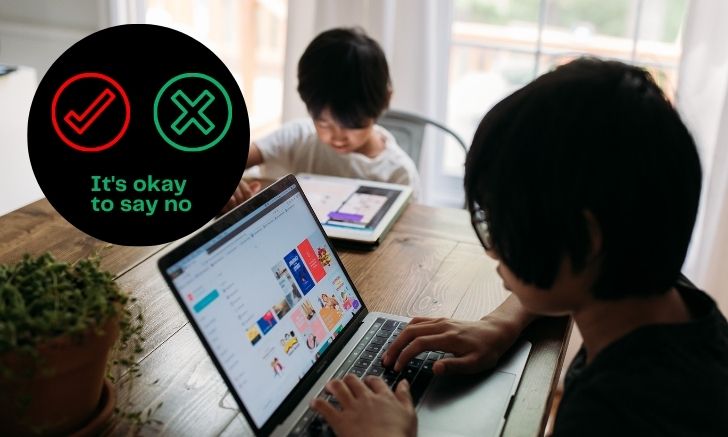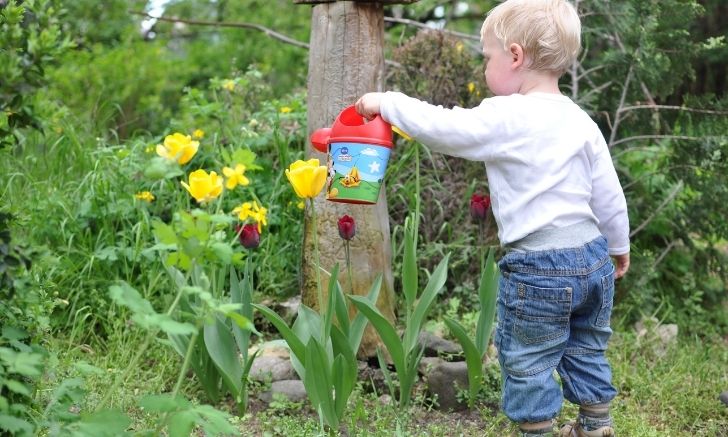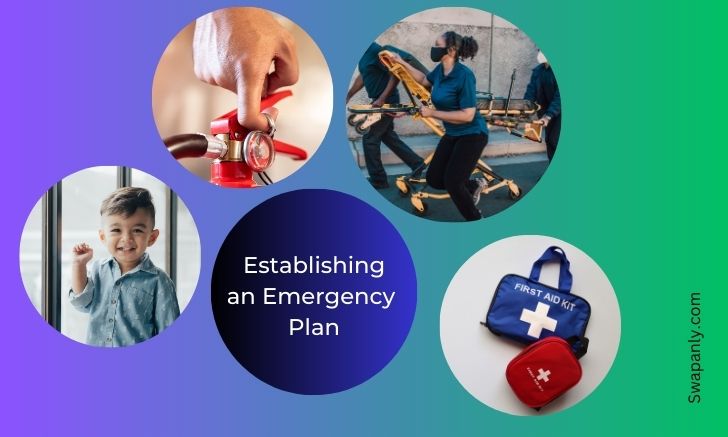Is there a need for extra care for child safety at home? As parents, one of our top priorities is to make sure our kids feel safe and secure in their own homes. But how do we go about doing that?
At home, a child's safety and security are of the utmost significance. It is crucial to take the required precautions to protect children's safety because they are more susceptible to accidents and injuries.
According to safehome.org research, about 40% of parents claimed that if suitable childproofing measures had been adopted, the damage to their child may have been prevented. And 64% agreed that childproofing is crucial.
The risk factors associated with the points are such as sharp edges, furniture, backyard equipment, plants in the backyard and the house, kitchen equipment, electrical sockets, radiators, laundry room equipment, household chemicals, garage, bathroom, and so on.
Most importantly, the major safety hazards around your home deserve anyhow to be fixed in terms of child safety at home.
In this blog, we’ll explore strategies for ensuring that your children are protected from both physical and digital threats – because peace of mind is priceless. Let’s get started!
How To Build Child Safety and Security At Home
1. Establishing Rules and Boundaries
Establishing rules and boundaries for children is a crucial component of keeping them safe. Before outlining the areas where your child is allowed to visit, you must speak with them about the importance of following the rules you have put in place.

A well-taught to-do list can help protect child safety.
Explain why you are setting these rules and boundaries and be sure to enforce them consistently and fairly. Ensure that your child has a clear understanding of what will happen if they do not obey or respect these limits. It may help to write down the house rules in a visible place for easy reference.
You can also reduce potential risks within your home by providing appropriate supervision when needed, as certain activities like baking could be dangerous without adult input. Make sure all medicines and cleaning supplies are kept out of reach, so as not to lead to accidental intoxication or harm.
If your children have mobile phones or access to electronics, make sure they know their responsibility when it comes to their interactions online or while using their devices. Regularly remind your children that they should never give away personal information online or accept requests from strangers in person or online, no matter how persuasive the person may be.
2. Implementing Supervision Strategies
Establishing an effective supervision strategy is essential to ensure your family’s safety and security. There are several strategies you can use to implement supervision in your home.

Children are habitually curious, so they need supervision
The most practical strategy is to have both parents, or an adult caregiver, actively monitoring and supervising young children whenever possible.
This means that one parent should monitor and supervise the children while the other parent works outside the home. This not only helps protect against potential risks but also provides kids with emotionally supportive relationships as they explore their environment.
Another precaution you can take is installing a home security system with motion sensors in each room. Any intruder entering the area will be recognized by the sensors because these systems are programmed to detect movement within a specific range.
And an alarm will sound to warn you of a potential threat situation. Providing your family with technology tailored for their safety can also help protect them from potential hazards at home and out of social settings.
Finally, it's important to be vigilant about who comes into contact with your family members – from neighbors/friends visiting your home to babysitters who are looking after them when you're away from home.
It's vital that you conduct background checks on any people unfamiliar to you or who have inadequate personal references before they come into close contact with anyone in your household.
Having complete information on whom those individuals are capable of greatly increases safety when dealing with strangers – regardless if they visit or watch over the children occasionally providing childcare services inside or outside the house.
3. Securing the Home Environment
When it comes to safeguarding your children, the home environment is an especially vulnerable setting. To minimize risks and reduce chances of danger, consider taking these steps to secure the home:

A fair and friendly environment enhances child safety at home.
- Secure locks on all accessible doors and windows. Use strong, durable locks with deadbolts for added reinforcement. Make sure doors are closed and locked when not in use or when no one is around to monitor the premises.
- Install alarm systems with motion sensors and keypads in strategic locations around the house. This will help prevent intruders from gaining access and alert you if there is any suspicious activity within the home. Utilizing home monitoring cameras can also help to ensure a safe environment for your family.
- Teach your kids how to stay safe inside the home by establishing boundaries, role-playing scenarios, teaching them how to properly respond during an emergency, and educating them on appropriate personal safety strategies.
- Explain why certain actions need to be taken as well as other strategies that can help keep them safe at all times while they are in their own space or public settings away from your direct supervision.
- Monitor closely who enters your property – visitors should be introduced before entering any areas of the property where your children may be present, even if just briefly passing through a common area like a kitchen or living room.
- Supervise closely when tradespeople such as plumbers, electricians, or cleaners are present within proximity of your children – they should remain under direct supervision while work is being performed in these areas of the house at all times. Additionally, check references (including social media presence) before allowing anyone outside of family members access to secure parts of your property.
- Utilize additional safety devices such as smoke detectors and carbon monoxide detectors throughout your house - installing coordinated systems (with alarms connected directly into monitored fire control centers via cellular base/landline) is especially recommended where available to help maintain a higher level of protection. Regularly check and regularly inspect these devices on a scheduled basis to maintain perfect working order.
- Keep the yard environment safe and secure for kids. If you have a pool in your backyard, put up a fence and lock the gate to prevent children from getting in and drowning. To avoid exposing your children to the chemicals, don't let them play outside by themselves for at least two days after using pesticides or herbicides.
- Establish security protocols – encourage good practices such as not leaving windows open & doors unlocked when not at home - put days & times expectations & rules for entering/leaving property shared with all those living at that address - if any elements require updating inform everyone immediately – reinforce with regular reminders about all security protocols agreed upon previously agreed upon.
4. Teaching Kids About Safety
Keeping children safe is a top priority for parents, caregivers, and teachers. It's important to teach kids to stay safe both inside and outside the home. While teaching kids about safety will not guarantee their complete security, it can help them avoid potentially dangerous situations. Here are some tips on teaching kids about staying safe:

Teaching kids in actions
4.1. Educate them on potential dangers inside the home
Start by talking to your children about everyday potential hazards within the home—for example, electric sockets or sharp objects left lying around. This can help kids identify areas that could be a risk factor even when you're not around. Also, consider conducting regular safety checks in your home for electric sockets and provide safety covers for them if needed.
4.2. Establish house rules
Discussing acceptable behavior with your child and setting clear boundaries helps to ensure their safety both indoors and outdoors. Agree on rules such as never leaving food unattended or locking the door when going out—and make sure they understand why those rules are important.
Consider establishing an agreed-upon curfew so you know where they are at certain times of the day/night if they’re allowed out alone (of course depending on their age).
4.3. Explain risks associated with strangers
Speak openly to your children about stranger danger emphasizing that seeking help from a person they do not know might put them in danger rather than helping them find solutions e.g., running away, crossing busy streets unaccompanied, even getting lost).
Help them come up with solutions such as “if I need help I should look for someone wearing a uniform like a policeman or a fireman” or “an adult I trust” like their teacher or family friend etc.,
4.4. Function practice drills
Participating in mock emergencies such as role-playing different scenarios can help you reinforce what you have taught such as following house rules (elements of fire escape plan etc.), familiarizing themselves with emergency contacts in case of playing outside/ going away from home and being aware of their location at all times .
The list of drills can go on but ultimately practice often enough so that reacting in those scenarios becomes second nature and the idea of safety is ingrained within their thought process.
5. Establishing Communication Protocols
To keep kids safe and secure in the home, it is important to establish communication protocols with children from a young age.
Start by talking with them about safety rules and how to respond when faced with a potentially dangerous situation. Ensure your child knows what language is acceptable for discussion at home, how to answer the phone, and how to respond if someone is trying to gain access to the house without permission.

Encourage the whole family to be involved in the conversation so that everyone understands their role in keeping the home safe and secure.
Provide appropriate resources such as books, articles, or videos on security topics relevant to children of all ages. Establish ground rules such as whom they should call if they are feeling unsafe or uncomfortable when outside of the home.
Additionally, consider signing up your child for a local self-defense class or even enrolling them in additional safety programs such as Internet safety commissions or safety workshops focusing on strangers or harassment prevention.
Take all of these measures while also communicating openly with your child about staying safe and secure at home at all times – this will ensure that everyone has an understanding of what it takes to remain safe and sound wherever they may be!
6. Monitoring Online Activity
Securing online safety for kids becomes highly important day by day. Due to the advancement in technology, it is critical to keep an eye on children’s online activity. It is ideal to place computers and laptops in a common area of the home so that parents can monitor these activities.
Additionally, make sure passwords for all computers, digital devices, and gaming devices are only known by adults.

Parents should discuss appropriate online behavior with their children, stressing the importance of not sharing personal information with strangers or participating in inappropriate conversations.
Also, review each child's online accounts (such as social media profiles) regularly, allowing them only "friends" you have approved beforehand.
Make sure your children know not to reveal their actual address or phone number online and have clear expectations about the kinds of content they should attach to any posts they send or receive.
It is a good idea to install parental control monitoring software onto each computer; this software makes it easy for parents to monitor activity and set time limits on device use if desired.
Finally, check your credit card bills routinely for any purchases made without permission via your children's accounts such as video games/apps or songs.
7. Establishing an Emergency Plan
Maintaining the safety and security of your children is a top priority in any home. Establishing an emergency plan to ensure you and your family can act quickly if faced with an unexpected situation is one of the most important safety measures that can be taken.

A good emergency plan defines responsibilities for family members in certain situations. It should include plans for power outages, fires, natural disasters, medical emergencies, and more.
Establish an emergency contact list of people close to you including neighbors, friends, relatives, and doctors who might be able to help in a crisis or who you could call upon if needed.
It’s also essential to prepare supply kits for food, water, and essentials such as first aid supplies to keep your family safe during uncertain times.
Depending on where you live, it may be beneficial to consider other preparations such as studying evacuation routes or special needs shelters that provide extra assistance during emergencies. The best thing parents can do is take steps now so they are prepared in case of an emergency later on down the road.
8. Seeking Professional Assistance
If you are concerned about the safety and security of your family, then seeking professional assistance from a qualified security specialist can help ensure that your home environment is safe and secure for your children.

A professional can evaluate the level of safety and security in your home and recommend improvements, such as installing locks on windows, motion-sensor lighting, surveillance mini-cameras, or establishing communication protocols with neighbors.
In addition, a specialist can provide advice on mitigating risks associated with carpooling and co-curricular activities.
Some companies offer services related to home security systems. These systems can include:
- Door locks
- Video cameras to monitor movement in certain areas of the house
- Monitored alarm systems where alarm alerts will be sent directly to an appropriate law enforcement agency (i.e., police)
- Technology solutions like tracking devices for children
9. Some Quick Guidelines
These are some guidelines for ensuring the security and safety of children at home:
- To stop kids from falling, install safety gates at the top and bottom of the steps.
- Install childproof locks on any cabinets or drawers that store potentially dangerous items or pointy objects.
- Use outlet covers to protect electrical outlets so kids can't insert things or their fingers into them.
- Prevent youngsters from accessing any cleaning products or chemicals.
- To warn you of potential dangers, install smoke and carbon monoxide alarms in each room.
- Inform your children about emergency procedures and how to summon assistance.
- Install window stops and guards to stop kids from slipping out of windows.
- Prevent youngsters from accessing firearms by keeping them locked up.
- Keep an eye on your kids' internet use and teach them about online safety.
- To make sure your family is protected, install a home security system.
In general, parents should exercise caution and implement the necessary safeguards to protect their children's safety and security at home. It is essential to teach kids about potential risks and how to keep safe at home.
Conclusion
A comprehensive strategy is needed to ensure the protection and safety of children at home. First, parents or other responsible adults should thoroughly search their homes to spot any potential dangers such as sharp objects, poisonous materials, and exposed wires.
Secondly, they need to set and communicate with the kids' clear norms and boundaries surrounding their conduct and use of household objects. Thirdly, parents need to install safety equipment like smoke detectors, cabinet locks, and baby gates.
In addition, parents should place a high priority on supervision, regular communication, and emergency preparedness training. Parents can provide their children with a safe and secure atmosphere at home by adhering to these guidelines.